3 Incredible Cycling Routes by the Sea in Spain
Friday, May 12, 2023
Spain is a paradise for cycling enthusiasts, with its stunning landscapes, beautiful coastline, and pleasant climate. One of the best ways to explore Spain is by bike, especially along its picturesque seaside routes. Here are three incredible cycling routes by the sea in Spain that you should definitely try.
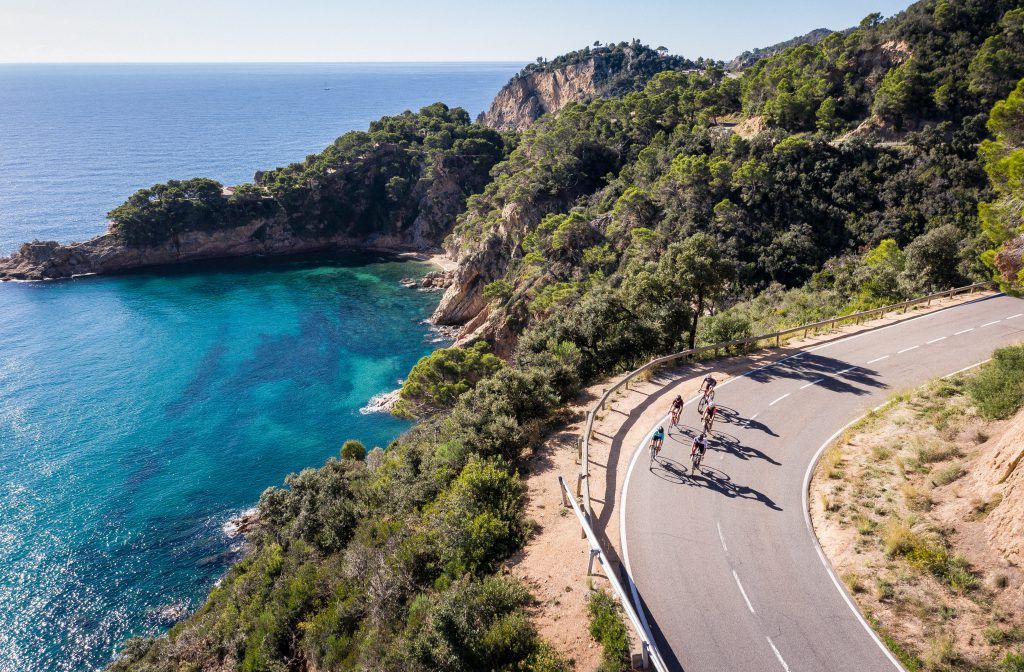
The Costa Brava Coastal Route is a breathtaking cycling path that stretches along the northeastern coast of Catalonia. Starting in Blanes and ending in Portbou, these routes stretch to approximately 200 kilometres of spectacular Mediterranean coastline. You'll pass through picturesque fishing villages, pristine beaches, and rugged cliffs, all while enjoying the refreshing sea breeze.
Highlights:
The Senda Litoral de Malaga is an ambitious project that aims to connect the entire coastline of Malaga Province through a series of cycling and walking paths. Currently, more than 180 kilometres of the route have been completed, offering cyclists a unique way to explore the stunning Costa del Sol. The path takes you through charming seaside towns, beautiful beaches, and dramatic cliffs.
Highlights:
-
Visit the historic town of Estepona
-
Explore the glamorous marina of Puerto Banús
-
Discover the natural beauty of Maro-Cerro Gordo Cliffs
The Ruta de la Costa de la Luz is a captivating cycling route that stretches along the southern coast of Andalusia, from Tarifa to Huelva. Covering approximately 250 kilometres, this route takes you through the beautiful Costa de la Luz, known for its golden sandy beaches, turquoise waters, and stunning sunsets. As you pedal along the coast, you'll pass through charming whitewashed villages, protected natural parks, and ancient historical sites.
Highlights:
-
Start your journey in Tarifa, the southernmost point of continental Europe
-
Discover the pristine beaches and dunes of Doñana National Park
-
Visit the historic city of Cádiz, one of the oldest continuously inhabited cities in Europe
The Ruta de la Costa de la Luz is a perfect choice for cyclists who want to experience the natural beauty and cultural richness of Andalusia's Atlantic coastline. With its laid-back atmosphere and breathtaking scenery, this route is sure to leave a lasting impression on any cycling enthusiast.
These three incredible cycling routes by the sea in Spain are just a taste of what this beautiful country has to offer. So, grab your bike and start exploring the stunning Spanish coastline!
 1
Like
Published at 10:47 PM Comments (0)
1
Like
Published at 10:47 PM Comments (0)
10 Epic Bike Routes Around Spain
Monday, March 8, 2021
.jpg)
From the Camino de Santiago to an itinerary that follows the route of El Cid or a trip throughout Andalusia or along the Pyrenees. Touring the cultural legacy of Spain on two wheels is an unrivalled experience. These are ten essential routes for bike lovers.
1. Vía Verde de Ojos Negros (from Teruel to Valencia)
Wikilok Route
The longest of a nationwide network of Vía Verdes (literally, Green Ways) along disused railroads, the Ojos Negros route runs for 160 kilometres in two stages. The first is in Teruel province and passes through the Sierra Menera, while the second descends through the interior of Valencia down to the coast. A more in-depth description of this route can be read here
2. The Transpirenaica (from Cabo de Higuer to Cabo de Creus)
Wikilok Route
This trans-Pyrenees route runs for almost 800 kilometres along the southern slopes of the mountain range, from the Cantabrian coast (Cabo de Higuer, Hondarribia, Irún) to the Mediterranean (Cabo de Creus, in Girona province). Or vice versa. Part of the Europe-wide GR network of footpaths, its distinctive red and white markings have guided thousands of cyclists from around the world through protected areas in the Basque Country, Navarre, Aragon, Andorra, and Catalonia dominated by 3,000-meter peaks and with accommodation available in picturesque mountain villages. The perfect combination of nature, landscape, history, and cuisine.

3. The French Way of the Camino de Santiago
Wikilok Route
Those in the know say the French Way (Camino Francés) of the Camino de Santiago (which runs for nearly 800 kilometres between Saint Jean de Pied de Port, in France, and the cathedral of Santiago de Compostela in northwestern Spain) is the best of the five major Saint James pilgrim routes. It’s easy enough at almost any time of year and offers a tremendous range of landscapes, architecture and cuisine, with any number of historical sites, cathedrals, monasteries, churches, fountains, hostels, restaurants and other facilities.
4. The Vía de la Plata Route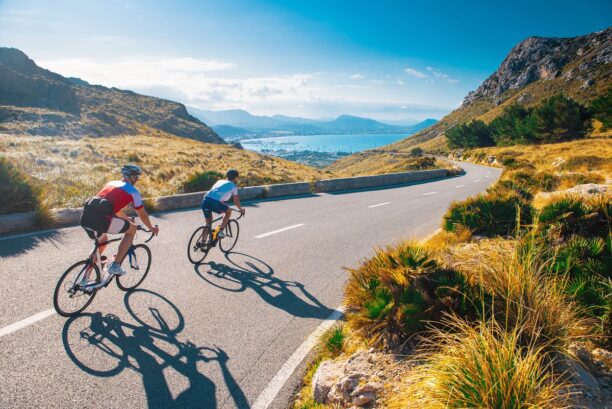
Wikiloc Route
The Via de la Plata Route, a network made up of 26 towns and cities, from Gijón on the Cantabrian coast to Seville, in Andalusia, in collaboration with four regional governments, has set up a bike route (also available on an app), with information and advice for cyclists, along with the best routes for road racers or off-road bikes, as well as a passport that gives holders discounts in establishments along the ancient trade route dating back to before the Romans – the name of which, contrary to popular belief, comes not from the Spanish for silver, plata, but from the Arabic Al-balat, which means paved or cobbled.
5. The Camino del Cid
Wikilok Route
“The Way of El Cid is a cultural-tourist route across Spain from northwest to southeast, from Castilla in the interior to the Mediterranean coast. It follows the history and story of Rodrigo Díaz de Vivar, El Cid Campeador, a famous medieval knight of the 11th century and who, together with Don Quixote and Don Juan, is one of Spain’s greatest characters. Unlike the latter two, El Cid is not only a character of literature but also of history.” So reads the Camino del Cid website, which offers both road and mountain bike routes along some 1,400 kilometres of pathways and 2,000 kilometres of roads divided into theme-based itineraries running for between 50 and 300 kilometres: The Exile (Burgos, Soria, Guadalajara), The Borderlands (Guadalajara, Zaragoza, Soria), The Conquest of Valencia (Teruel, Castellón, Valencia), along with seven others.
6. The Ruta de Don Quijote (Castilla-La Mancha)
Wikilok Route
Along the course of its 2,500 kilometres broken up into 10 stages that pass through 148 communities in the five provinces of Castilla-La Mancha, the Don Quijote route takes in the main natural and cultural areas of the region, featuring livestock routes, historic roads, rivers and disused railroads that provide access to more than 2,000 sites of cultural interest. Along the way, there are plenty of great outdoors activities: birdwatching, the Cabañeros and Tablas de Daimiel national parks, six natural parks, 12 reserves and six micro-reserves.
7. The TransAndalus
Wikilok Route
Conceived as a way to get to know Andalusia’s eight provinces by bike, from the volcanic landscapes of Cabo de Gata, in Almeria, down to the wetlands of Doñana, in Huelva, the TransAndalus is a non-signposted 2,000-kilometre itinerary for cyclists. Some sections include GR paths, while one-third of the routes pass through protected areas. This project was set up by cycling enthusiasts in Andalusia who have provided information to build up this ever-growing collection of maps, routes and tracks, all with GPS.
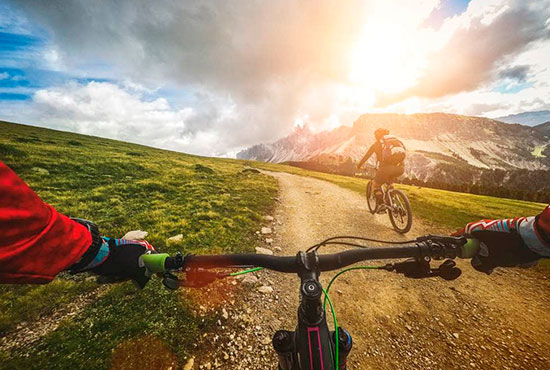
8. The Castilla Canal (Castilla y León)
Wikilok Route
In the middle of the 18th century, a project was begun to transport cereals grown in Castilla y León to ports on the Cantabrian coast via a network of canals, but only 207 kilometres of the so-called Canal de Castilla was ever built. That said, it is a fine example of Spanish hydraulic engineering and very popular with bike lovers. It can also be travelled by foot, horse or by barge. The northern route runs from Alar del Rey toward Calahorra de Ribas, in Palencia province, and from there to Medina de Rioseco, in Valladolid; the southern route runs from El Serrón, in Grijota (Palencia), to Valladolid.
9. The Cister route (Tarragona and Lleida)
Wikilok Route
The Alt Camp and Conca de Barberá districts in Tarragona, along with Urgell in neighbouring Lleida, each have a major Cistercian monastery: Santes Creus, Poblet and Vallbona de Les Monges respectively. The GR 175 links the three monasteries: 108 kilometres for cyclists, with four options in the more difficult stretches. This is the backbone of the Ruta del Cister, which includes 65 communities offering not just a rich cultural heritage but spectacular scenery, great wine and food, and lively fiestas.
10. EuroVelo Project: Europe by bike
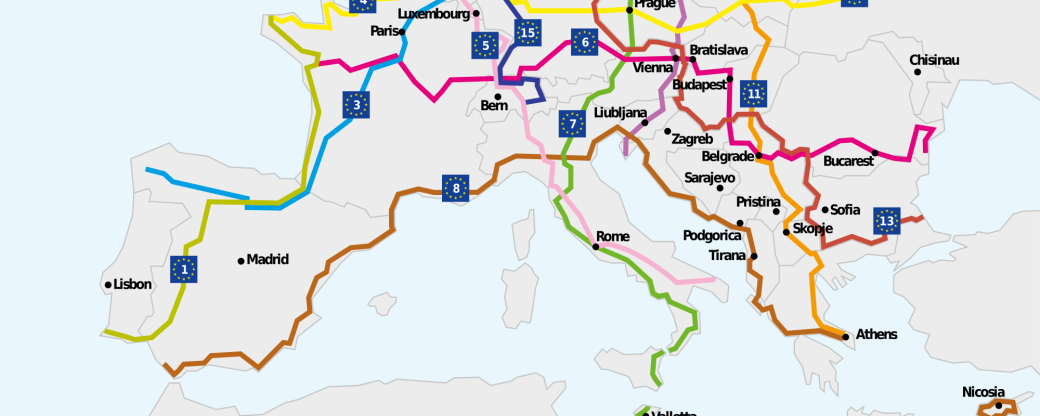
Eurovelo website
The Euro Velo Project, a network of 15 long-distance cycle routes connecting and uniting the whole European continent, is due for completion by 2020. Three of the routes are in Spain. The EV 1, or Atlantic Coastal Route which starts on the French border with the Basque Country and ends in Ayamonte, in Huelva province, takes in part of the Via de la Plata and the coast of Portugal. The EV3 links pilgrim routes between Norway and Santiago de Compostela, and the EV8, the Mediterranean Route, starts in Athens and finishes in the Atlantic waters of Cadiz.
 1
Like
Published at 10:14 AM Comments (0)
1
Like
Published at 10:14 AM Comments (0)
Cycling from Teruel to Castellon
Tuesday, September 25, 2018
Exploring a VIA VERDE route is always a unique experience, not only because of the few opportunities to appreciate an enormous piece of infrastructure but also because railroads usually traverse the best landscapes in Spain. The Ojos Negros route has the added benefit of being the longest to date with a distance of 160 kilometers. The route begins in Teruel and ends in Castellón. Of course it can be traveled in the opposite direction if you wish. Along the route, there is a trip full of surprises waiting for you. It travels through 20 tunnels, over 21 bridges, along reservoirs, on plateaus, through natural wildernesses and through charming towns where you can take a well-deserved rest.
Although this route is ideal for cyclists, it can also be enjoyed on foot by doing small sections or even covering some parts by train since the present day track runs almost parallel to the route. There are many reasons not to miss the Ojos Negros Greenway, but here are the top five that will definitely make you include it among your next travel destinations or weekend excursions.
1. Nature surrounds you during the whole trip
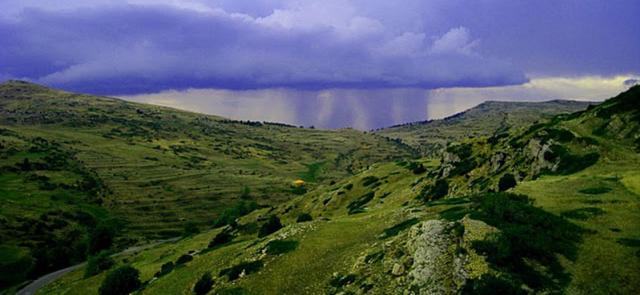
Since the Greenway is such a long route, the landscape changes completely from its start in Santa Eulalia, Teruel, along the foothills of the Sierra de Javalambre, to its finish in Algímia d'Alfara in Castellón, only a few kilometers from the Mediterranean Sea. Nature surrounds you on all sides throughout the entire journey and its a genuine treat for your eyes. What will leave you especially captivated are the almost virgin lands of Javalambre, the Mediterranean forest that prevails over almost all of the route, full of oak trees and conifers, and the Dehesa Wilderness Area, almost at the end of the route.
2. You can see panoramic views fit for a movie
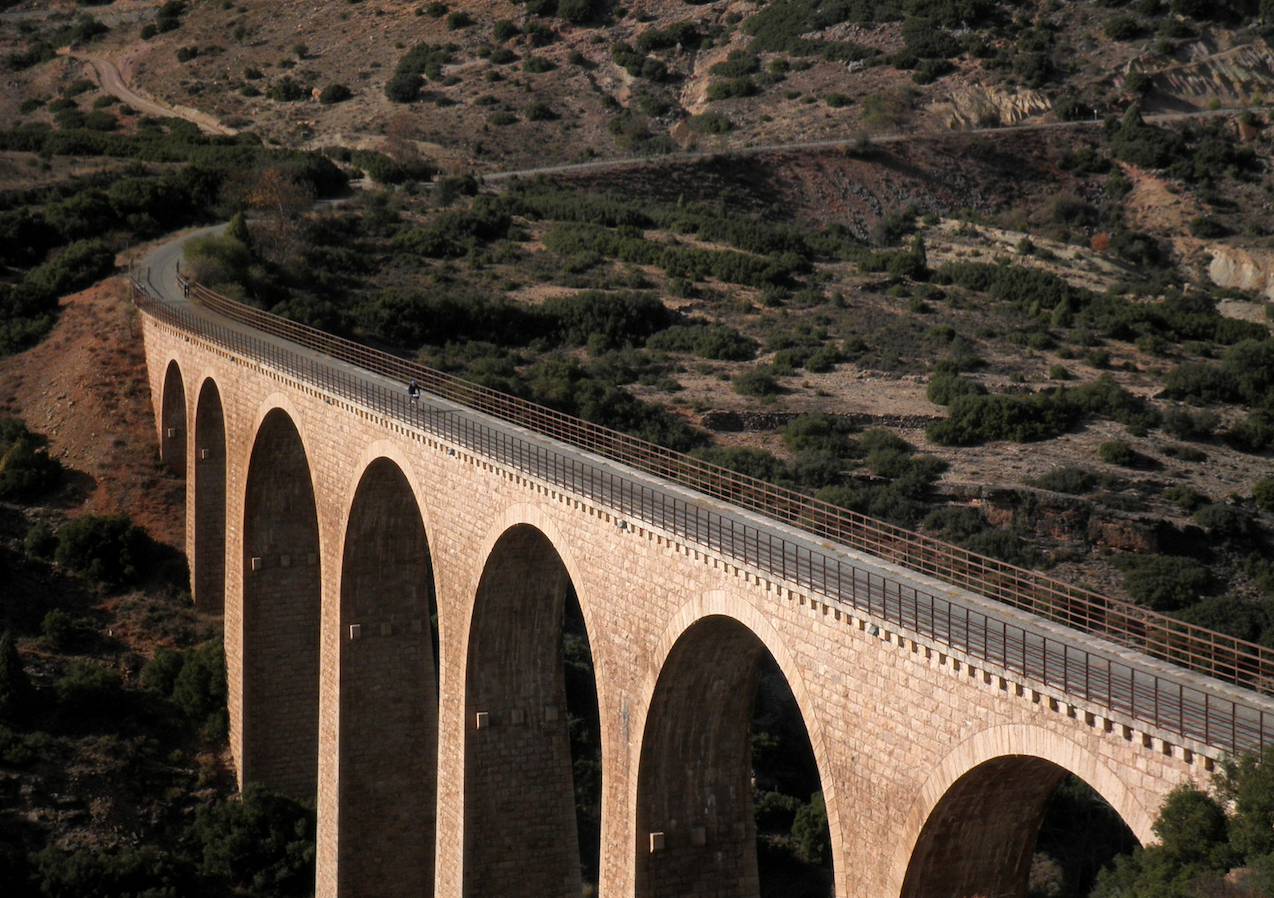
One of the attractive features of the Greenways is that the train tracks often go over viaducts, or railway bridges, which today serve as excellent viewpoints. Along this route you will find many of them and ones that are very beautiful. One of the most impressive is the Albentosa viaduct in Teruel that has seven impressive arches and rises 50 meters above a ravine. Another bridge that will leave you astonished is the Chispo viaduct, also in province of Teruel. It is shorter at 22 meters, but is almost 90 meters long.
3. You explore mysterious landscapes

On this route you can pass through up to 20 tunnels, most of which are well lit and perfectly fit for travel. Among the most impressive, are theAlbentosa tunnel, on a curve and nearly 400 meters long, and other tunnels that are shorter but have the same charm such as the Arrión tunnel (352 m) and the Ragudo tunnel (237 m). The longest tunnel along the entire route is the Caudiel tunnel in Castellón that is more than 500 m long. Along the path you can find other mysterious locations, such as abandoned train stations or even an old Machine gun nest bunker from the Civil War, which can be seen near Caudiel.
4. You discover towns full of charm
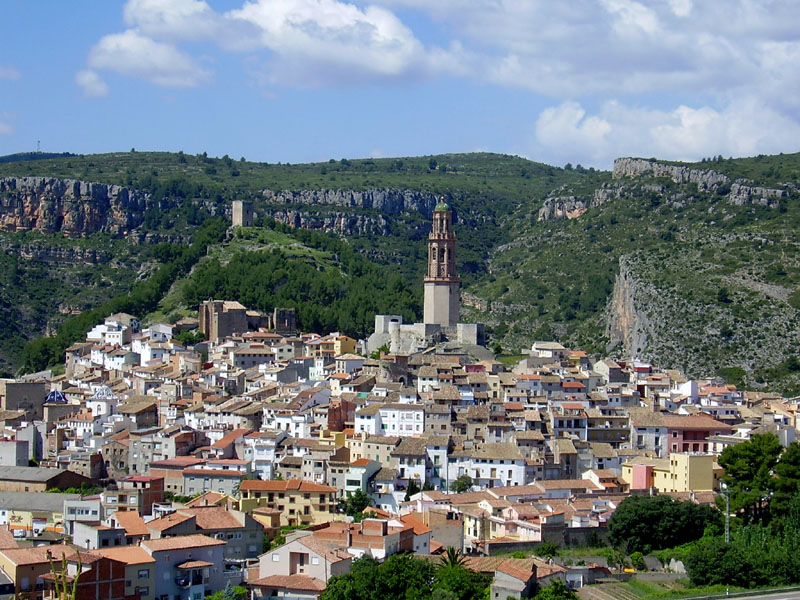
Even points along the route with the highest elevation are more than justified, especially when you go through locations like Sarrión , Teruel, located at almost 1000 meters above sea level and with wonderful treasures such as the Gate of Teruel, one of the entry gates to the 12th century walled city, Saint Peter's Church (18th century) or the delightful Truffle Festival that takes place in December. Jérica, in Castellón, should also be a stop on your journey. Here you cannot miss the Las Campanas Mudejar tower (17th century), built upon a promontory where you can enjoy an excellent panoramic view of the entire town (seen above), the old El Socós church, and of course, its delicious horchata, a traditional milk drink. And of course Navajas, almost at the end of the route, is where you can see the impressive Brazal waterfall, with a drop of 30 meters, and the Bride's Jump.
5. It gives you the chance to feel powerful emotions
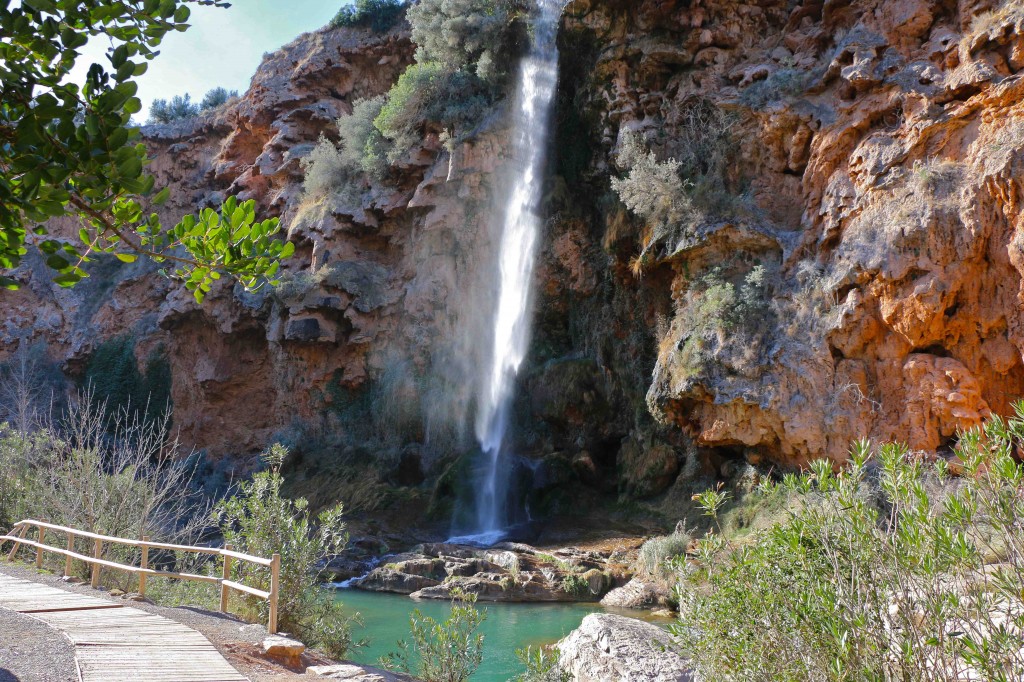
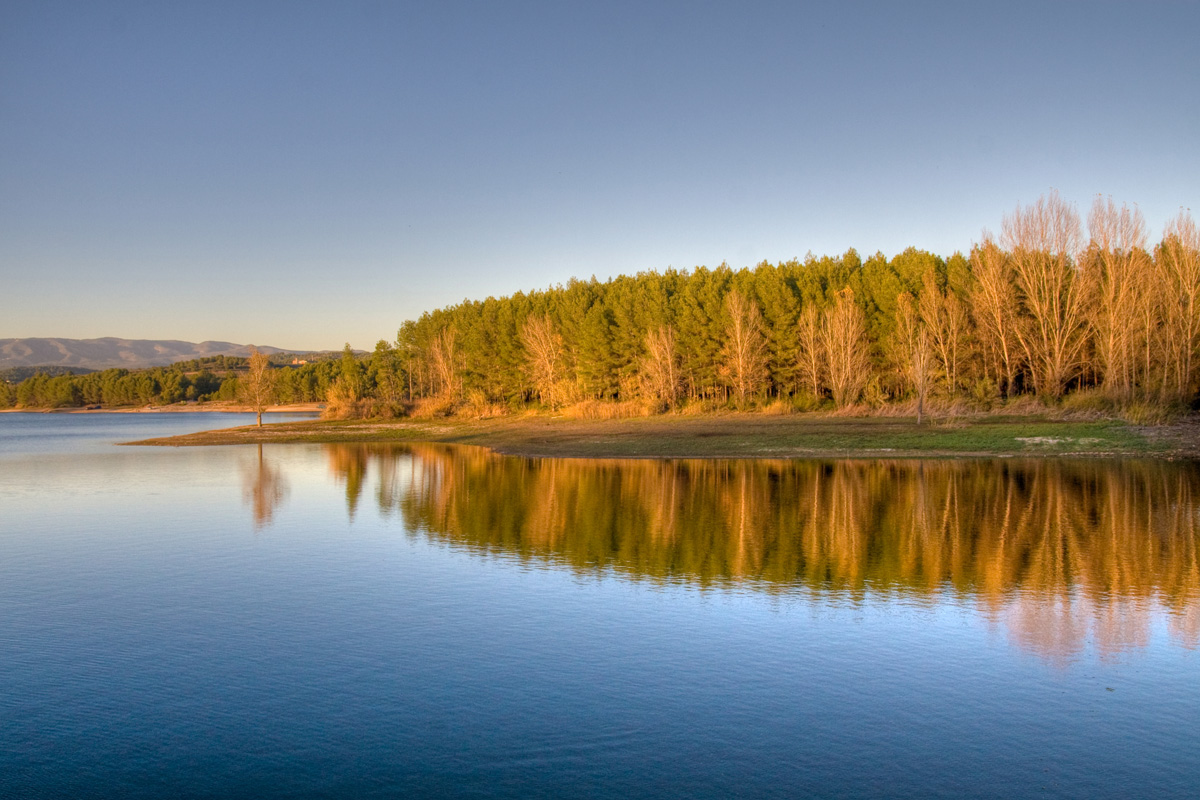
Any Greenway is a great option for active tourism but, without a doubt, one of the most attractive routes for sports enthusiasts is the Ojos Negros Greenway. Apart from being specifically recommended for bike tourists due to its length and terrain conditions, it also has other very exciting options for adventure. One of which you can find at the Fuensanta viaduct, on the land slope that connects with Castellón, where there are good conditions for bungee jumping that is organized and assisted by specialized, local businesses. Near the viaduct, there is the added allure that there is another, almost identical bridge over which trains still travel. Those who prefer a water option can enjoy the Regajo reservoir, also in Castellón, where you can rent kayaks and enjoy an outing in natural, breath-taking surroundings.
http://www.viasverdes.com
 1
Like
Published at 3:01 PM Comments (3)
1
Like
Published at 3:01 PM Comments (3)
Spain on four wheels...Some of the best drivers' roads in the country
Friday, June 23, 2017
Sometimes remarkable coastal roads become tourist attractions, their level of allure directly proportional to how many bends and curves they have. A drive along one of these scenic routes guarantees impressive landscapes and dramatic views – and maybe a bit of vertigo, too. Discover some of Spain's best drivers' roads...
Sa Calobra, Escorca, Mallorca
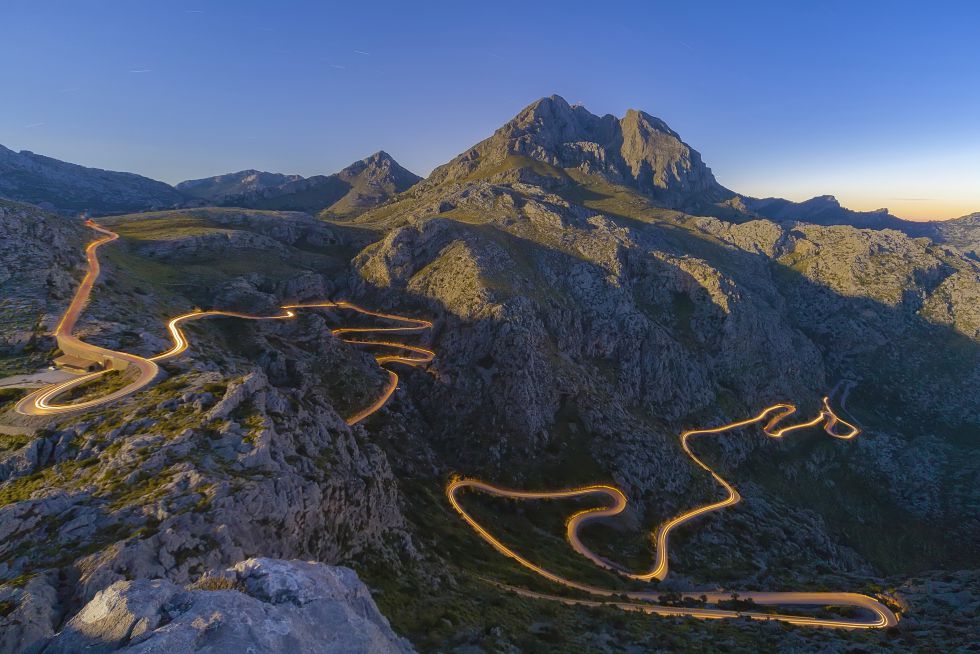
As soon as you reach the first turn, you’ll see the way that the gray asphalt folds of the road have been inserted directly into the Tramontana mountain range. You’ll also see that Mallorcan engineer Antoni Pariette (1899-1979) went to great lengths to construct this winding highway without the use of any tunnels. The twelve-kilometer-long descent to Sa Calobra drops 900 meters, protected by walls and wooden railings. Particularly interesting is the 270 degree loop, called the “Nudo de Corbata” (Tie Knot), complete with a bar, although this drive is harrowing enough without any alcohol in the system. Many tourists like to get out and walk a few meters along the side of the road to photograph the almost hyper-realist view.
The narrowness of the road requires compromise between cyclists and the fifty buses that will sometimes drift into the oncoming lane, at least at the twelve points where the turn is a full 80 degrees. Since Sa Calobra is a popular spot to break for lunch during a daytrip to the mountains, the buses usually descend in greatest number around 11:30 and return between 13:30 and 15:30. Once at the pier, you have to visit the beautiful “Torrente de Pareis” (Twin Streams), a gorge that’s home to one of the most difficult hikes on the island of Mallorca. Tuent cove is another must, where you can grab a bite to eat at Es Vergeret as well as take a dip in the crystal clear waters.
Dragon’s tail
La Aldea-Agaete, Gran Canaria
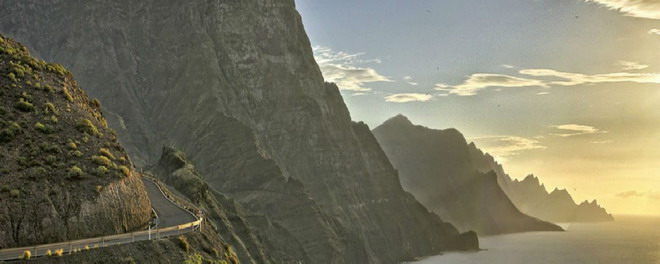
The highway GC-200, traversing the 35 kilometers between La Aldea and Agaete, snakes in between crags and seesaws over cliffs, practically radiating the sweet aroma of adventure. Start at the Balcón Lookout, just in front of the vertigo-inducing drop-offs, and begin your zigzag along the coastal road shaped like a dragon’s tail – at some point, you’re sure to encounter Tomás’s caravan offering water and sweet mango. After climbing 600 meters, you’ll reach the spectacular stretch called Andén Verde (Artenara), where you can park just before the sign or further ahead at the bus stop. You’ll find the glittering, ancient beach of Las Arenas, the impressive Roque Faneque, and the western coastline of Gran Canaria. Stop at El Risco for a quick tapita de queso at the bar Perdomo.
Upon entering Guayedra ravine, pay attention to the recycling containers and trash bins, which you can follow on foot to descend to the naturist beach. This visit will surely offer an unforgettable view.
From the laurel forest to the sea
Taganana, Santa Cruz de Tenerife

The descent to the little town of Taganana in the rocky Guanche region is one of the most stunning secrets of Tenerife. Beyond the laurel forest and the sea of clouds floating above it, the TF-134 tunnel dominates this stretch of climates in transition, leading towards the northern slope of the peninsula of Anaga. Despite the reassuring side rails, the 5-kilometer serpentine descent demands respect and induces vertigo, freely following the natural ridge down the mountain. At the 2-kilometer point, the Amogoje lookout offers a view almost too beautiful to be real, found at the base of a promontory where some claim to see a lion’s face etched into the massive rock. The view opens out to the Atlantic, including the Roque de Fuera and Roque de Dentro. The houses of Taganana stand out like white stains on the green landscape, molded to the bends and whims of the terrain.
If you follow the highway down, you can climb the Roque de las Bodegas at Almáciga beach after savoring the grilled fish and fried octopus of El Frontón (+34 922 59 02 38). Finish off the excursion by passing through Benijo beach and enjoy an evening’s stay in the town of Taganana, waiting until morning to make your way out of the labyrinth.
Beach route
Ribadeo/Barreiros, Lugo
The Mariña Lucense highway starting at Rinla is flat and more or less straight, consisting of 10 kilometers. Start at Os Castros, the Ribadeos’ preferred beach for taking in some sun, and continue to As Illas, where you’ll need low tide to explore the islets and the strange, marvelous rocky formations that adorn them. After a stop at the iconic beach Las Catedrales (which you’ll have to make a reservation to see), leave Ribadeo and enter the town of Barreiros via the wooden footbridge. From Arealonga beach, arrive at As Pasadas, where you can stop by an exhibition center built entirely from recycled materials by the handless artist Celso Dourado.
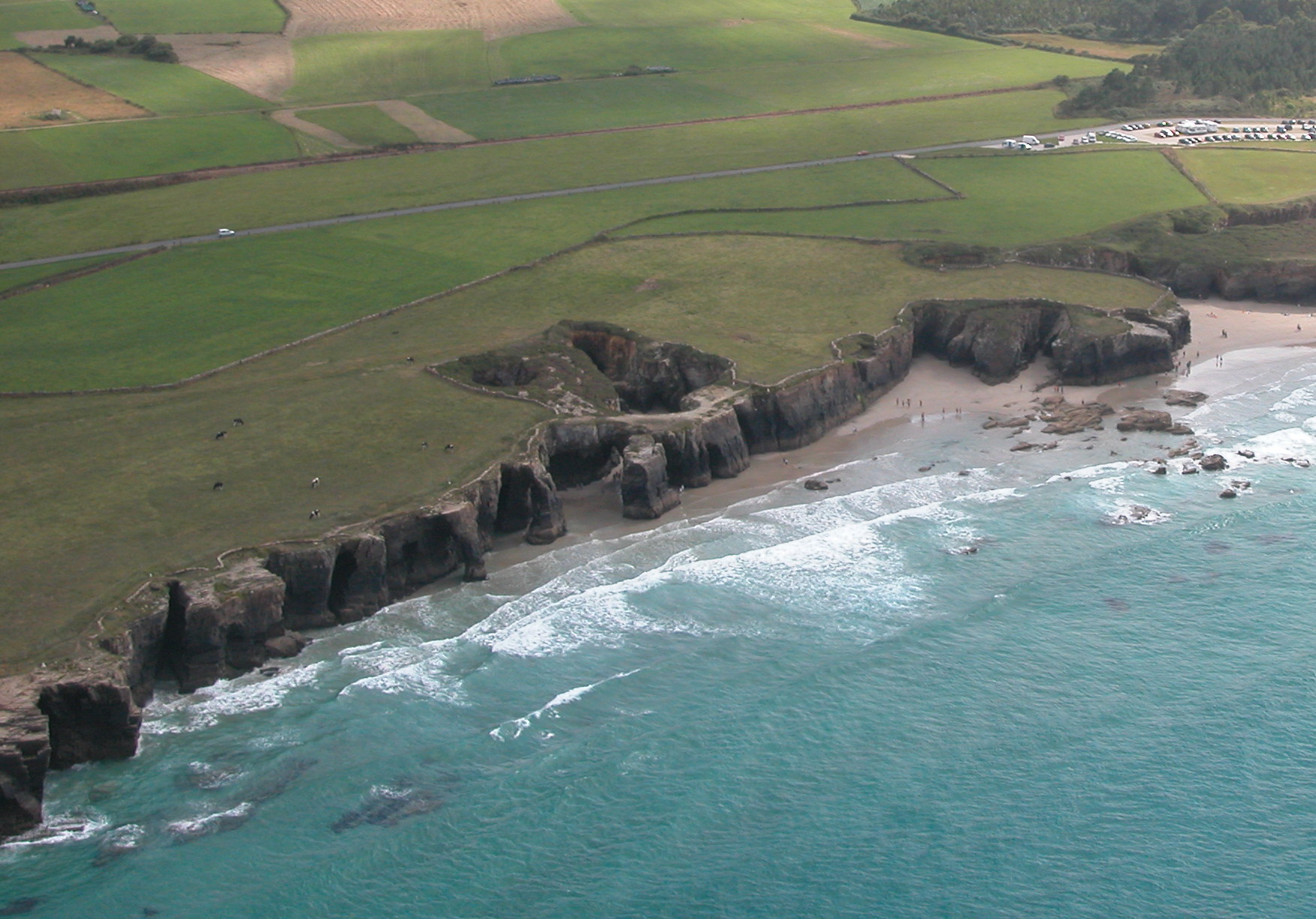
Hop over to Lóngara beach, where a section of the beach is closed off just for surfers and the curious can observe their stunts from the ledge above. Follow along Balea, Fontenla and especially the Coto sandbank, which extends languidly, uninterrupted by buildings and flanked by sand dunes. Finally, end the day at the islet of Altar beach, which offers a breathtaking view of the mouth of the Masma river and where it's possible to stroll along the shore even at high tide.
 0
Like
Published at 6:38 PM Comments (1)
0
Like
Published at 6:38 PM Comments (1)
Nicotine for Oxygen
Tuesday, August 12, 2014

I started cycling when I gave up smoking. I was smoking on average 20 a day for nearly 20 years. Not very clever, I know, but I finally decided that it was enough and I needed to make a change. I stopped radically, no reducing the number of cigarettes or nicotine patches or gum, no, none of that, just simple cold turkey, but  with a strong mental preparation before hand. Fortunately it was easier than I had initially expected. As a part of my change I had decided it was time to get fit and attempt to reverse some of the damage. I hated going to the gym, and got very bored running so I needed something a little more exciting and then I was introduced to road cycling. with a strong mental preparation before hand. Fortunately it was easier than I had initially expected. As a part of my change I had decided it was time to get fit and attempt to reverse some of the damage. I hated going to the gym, and got very bored running so I needed something a little more exciting and then I was introduced to road cycling.
I bought a simple road bike and just started pedaling, at first it wasn’t very far, a few km’s, in fact I would get tired even going down hill! But very shortly I started to build some stamina and it was the beginning of a new journey for me and I haven’t stopped exploring ever since. I swapped my daily dose of nicotine for my daily dose of oxygen on two wheels, a far more exciting way to spend my time. I hope to share some of this journey with you and promote what a wonderful place Spain is for cycling.
On the whole, Spain is a very cycling friendly country with an impressive cycling heritage and where ever you go you can see people of all ages pedalling away. It is a country of tremendous diversity and scope, it has everything the cyclist loves: quiet roads, cycle paths, great weather, ever changing landscapes, flat valley bottoms to challenging mountain climbs, friendly people, world famous cultural and architectural sights and of course spectacular culinary delights. Paella, Dénia Prawns, Manchego cheese, Rias Baixas Albariño, Tempranillo from Ribera del Duero, the famous “tortilla”, cured meats, mouth-watering seafood platters and the list just goes on and on…after all one has to replace the calories used up on that long ride.

Away from the coastal tourist hotspots there’s much in Spain to attract cyclists. It boasts some of Europe's finest cities and is a hotbed of culture. Not surprisingly, for one of the most mountainous countries in Europe, it is also home to some of the continent's most spectacular scenery.
Northern Spain is just about as far away as you can get from Spain's tourist hubs – and not just geographically. If you opt for a cycling trip around the Cantabria province, rich green views, picturesque coastal towns, secluded coves and dramatic peaks will welcome you. And as you wind your way along this verdant coastline, over to the south lies the Picos de Europa National Park. With its striking peaks, deep caves, brown bears and wolves, the Picos offer a tempting, if challenging, diversion inland.
Over to the east, the city of Girona acts as either a great start/finish point for a circular route around Catalonia or, for the fit, a terrific base for daily excursions to the coast or into the hills. Head west and you're into some serious mountain territory, used for training by some of the world's top professional teams.

Moving further south and you hit the Valencian Community. The combination of excellent surfaced roads in the interior of the Valencia region with excellent rural accommodation and sun practically guaranteed for most of the year make the Valencia region an ideal place for cycling all year round. Popular with international teams drawn by the fine weather in spring and autumn plus the empty well maintained roads, cyclists of all ages and ability can enjoy the splendid scenery and terrain to be found here, as well as the endless cycling lanes that literally cross country and mountains for kilometers.
Often based in small villages, cycle tour operators have become part of the community and provide the perfect way for visitors to connect with village life and to meet local people. The majority of the rural roads running through the rich agricultural lands are of good quality and provide an excellent way to gain an insight into the production of wine, olives, almonds and oranges which are the staple produce of the Valencian region.
The best time for cycling in Valencia is in the spring and autumn, when sun is practically guaranteed and when temperatures do not get too extreme. But even in winter there is usually plenty of sun and little rain which can make for ideal cycling conditions. This is my region and I can say I only lost 4 cycling days all winter becaus of the weather. Even in January cycling was enjoyable, admittedly a little chilly but still enjoyabel nonetheless.
As I continue with my blog I will be writing about these areas and others, as well as routes I have done and also routes I aspire to do, all in the hope of showing a different Spain and the best way to stay healthy at the same time.
 0
Like
Published at 3:20 PM Comments (2)
0
Like
Published at 3:20 PM Comments (2)
Spam post or Abuse? Please let us know
|
|